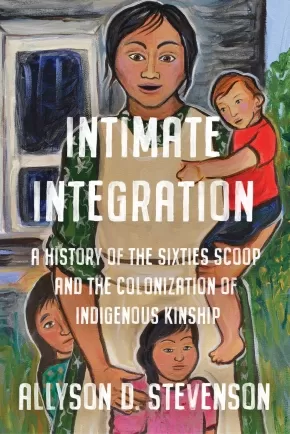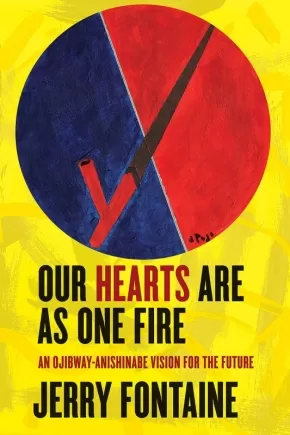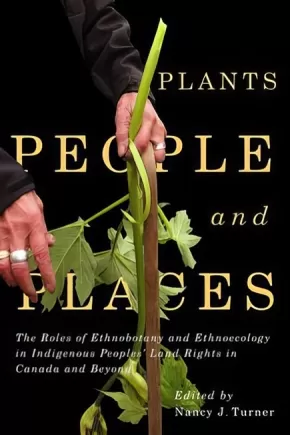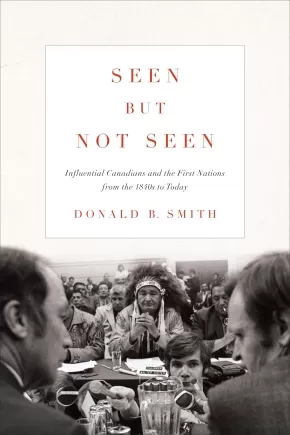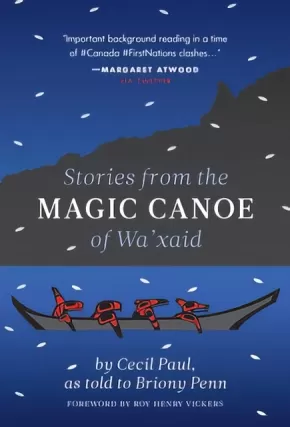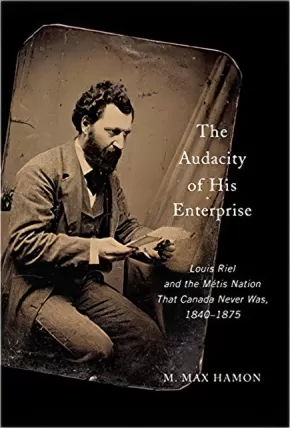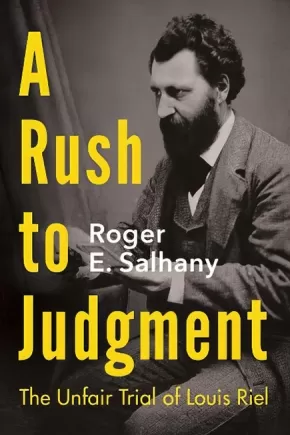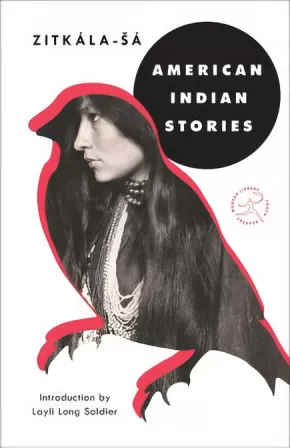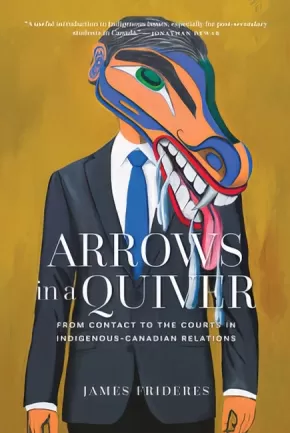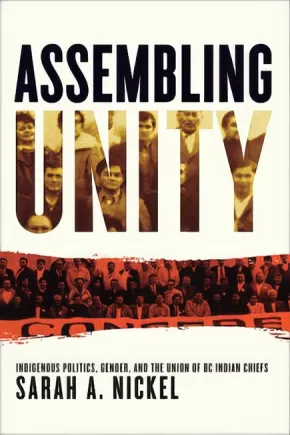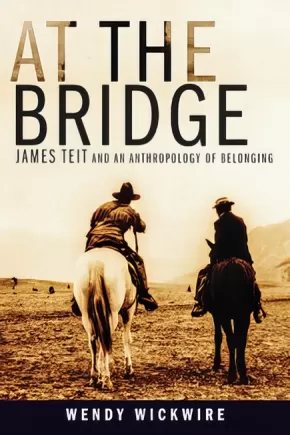History
Synopsis:
Privileging Indigenous voices and experiences, Intimate Integration documents the rise and fall of North American transracial adoption projects, including the Adopt Indian and Métis Project and the Indian Adoption Project. Allyson D. Stevenson argues that the integration of adopted Indian and Métis children mirrored the new direction in post-war Indian policy and welfare services. She illustrates how the removal of Indigenous children from their families and communities took on increasing political and social urgency, contributing to what we now call the "Sixties Scoop."
Making profound contributions to the history of settler colonialism in Canada, Intimate Integration sheds light on the complex reasons behind persistent social inequalities in child welfare.
Reviews
"While the process of Truth and Reconciliation in Canada has raised awareness about residential schooling, what remains less known is the equally devastating systemic and ongoing assault on Indigenous children through the child welfare system. Allyson D. Stevenson thoroughly maps out this truth, shedding new light on the role of the state in causing multigenerational trauma to Indigenous families." — Kim Anderson, Canada Research Chair in Indigenous Relationships, University of Guelph, author of A Recognition of Being: Reconstructing Native Womanhood
"Intimate Integration is politically sharp, carefully researched, and intellectually generous. Allyson D. Stevenson transforms how we see modern Canadian colonialism and the range of ways that Indigenous people have resisted and rebuilt in the face of it." — Adele Perry, Department of History and Women’s and Gender Studies, University of Manitoba
"Deftly weaving together academic training in history and lived experience as a Métis adoptee, Allyson D. Stevenson provides a path-breaking, powerful, eye-opening study that is essential reading for Canadians seeking to understand the trauma of child removal on Indigenous families and communities as well as their resistance and resilience." — Sarah Carter, Department of History and Classics, University of Alberta
Educator Information
Table of Contents
Prologue
Introduction
1. The Bleeding Heart of Settler Colonialism
Indigenous Legal Orders and the Indian Act
From wáhkôhtowin to Transracial Adoption
2. Adoptive Kinship and Belonging
Gender and Family Life in Cree Métis Saskatchewan
The Emergence of the Euro-Canadian Adoption Paradigm
Indigenous Adoption and Euro-Canadian Law
3. Rehabilitating the “Subnormal [Métis] Family” in Saskatchewan
4. The Green Lake Children’s Shelter Experiment: From Institutionalization to Integration in Saskatchewan
The Social Work Profession and the Rationalized Logics of Indigenous Child Removal in Saskatchewan
5. Post-War Liberal Citizenship and the Colonization of Indigenous Kinship
The 1951 Indian Act Revisions and the rise of “Jurisdictional Disputes”
6. Child Welfare as System and Lived Experience
Adopting a Solution to the Indian Problem
7. Saskatchewan’s Indigenous Resurgence and the Restoration of Indigenous Kinship and Caring
8. Confronting Cultural Genocide in the 1980s
Conclusion: Intimate Indigenization
Epilogue: Coming Home
Bibliography
Primary Sources
Interviews
Newspapers
Government Documents
Statues, Regulations, and Court Cases
Statutes of Canada
Saskatchewan Statues
Statutes of the United States
Archival Series
Printed Government Documents
Canada. Department of Citizenship and Immigration. Indian Affairs Branch. Annual Reports, 1950–1965
Printed Primary Sources
Secondary Sources
Websites
Additional Information
352 pages | 6.00" x 9.00" | 47 illustrations | Paperback
Synopsis:
A vision shared. A manifesto. This remarkable work argues that Anishinabeg need to reconnect with non-colonized modes of thinking, social organization, and decision making in order to achieve genuine sovereignty. In Our Hearts Are as One Fire, Jerry Fontaine recounts the stories of three Ota’wa, Shawnee, and Ojibway-Anishinabe leaders who challenged aggressive colonial expansion – Obwandiac, Tecumtha, and Shingwauk. He weaves Ojibwaymowin language and knowledge with conversations with elders and descendants of the three leaders. The result is a book that reframes the history of Manitou Aki, sharing a vision of how Anishinabe spiritual, cultural, legal, and political principles will support the leaders of today and tomorrow.
Reviews
"A critically important manifesto written by an Anishinabe leader. Every First Nations leader in North America must read Our Hearts Are as One Fire. It is the book we have all been waiting for." — Matthew L.M. Fletcher, director of the Indigenous Law and Policy Center, Michigan State University
"makwa ogimaa presents an intimate story of Anishinabe traditional leadership, one that reflects the place of “an ethics of relationship” that is so urgently needed as we search for paradigms of leadership that once again connect us to each other and to the Earth."— Gregory A. Cajete, professor of Native American Studies and Education, University of New Mexico
Educator Information
Table of Contents
Foreword / Lee Anne Cameron
Ah-di-so-kay Anishinabeg / Traditional Storytellers
Maaitaa / Prologue
Nitam igo / Introduction
1 Gah-o-mah-mah-wahn-dah-wi-zid gah-ki-nah-gay-goo ji-gi-kayn-dah-so aki / A prophet is someone who has a completed view of the world
2 Obwandiac / The Man who Travelled and Stopped at Many Places
3 Tecumtha / He Walked Across
4 Shingwauk / The White Pine, Boss of All the Trees
5 N’swi-ish-ko-day-kawn Anishinabeg O’dish-ko-day-kawn / Our Hearts Are as One Fire
6 Meegwetch bi-zhin-dah-wi-yeg / Thank you for listening to me
Wayekwaase / It is finished
Appendix
Timeline
Glossary; Notes; Index
Additional Information
280 pages | 5.50" x 8.50"
Synopsis:
Since the Truth and Reconciliation Commission released its Calls to Action in June 2015, governments, churches, non-profit, professional and community organizations, corporations, schools and universities, clubs and individuals have asked: “How can I/we participate in reconciliation?”
Recognizing that reconciliation is not only an ultimate goal, but a decolonizing process of journeying in ways that embody everyday acts of resistance, resurgence, and solidarity, coupled with renewed commitments to justice, dialogue, and relationship-building, Pathways of Reconciliation helps readers find their way forward.
The essays in Pathways of Reconciliation address the themes of reframing, learning and healing, researching, and living. They engage with different approaches to reconciliation (within a variety of reconciliation frameworks, either explicit or implicit) and illustrate the complexities of the reconciliation process itself. They canvass multiple and varied pathways of reconciliation, from Indigenous and non-Indigenous perspectives, reflecting a diversity of approaches to the mandate given to all Canadians by the TRC with its Calls to Action.
Together the authors — academics, practitioners, students and ordinary citizens — demonstrate the importance of trying and learning from new and creative approaches to thinking about and practicing reconciliation and reflect on what they have learned from their attempts (both successful and less successful) in the process.
Reviews
“Alerts Canadians to what must be done if we are to seriously embrace the goal of decolonizing relations with Indigenous peoples." – Peter Russell, Professor Emeritus, Department of Political Science, University of Toronto
Educator & Series Information
Table of Contents
Introduction
Ch. 1—Paved with Comfortable Intentions: Moving Beyond Liberal Multiculturalism and Civil Rights Frames on the Road to Transformative Reconciliation
Ch. 2—Perceptions on Truth and Reconciliation: Lessons from Gacaca in Post-Genocide Rwanda
Ch. 3—Monitoring That Reconciles: Reflecting on the TRC’s Call for a National Council for Reconciliation
Ch. 4—A Move to Distract: Mobilizing Truth and Reconciliation in Settler Colonial States
Ch. 5—Teaching Truth Before Reconciliation
Ch. 6—“The Honour of Righting a Wrong:” Circles for Reconciliation
Ch. 7—What Does Reconciliation Mean to Newcomers Post-TRC?
Ch. 8—Healing from Residential School Experiences: Support Workers and Elders on Healing and the Role of Mental Health Professionals
Ch. 9—Learning and reconciliation for the collaborative governance of forestland in northwestern Ontario, Canada
Ch. 10—Bending to the Prevailing Wind: How Apology Repetition Helps Speakers and Hearers Walk Together
Ch. 11—How do I reconcile Child and Family Services’ practice of cultural genocide with my own practice as a CFS social worker?
Ch. 12—Repatriation, Reconciliation, and Refiguring Relationships. A Case study of the return of children’s artwork from the Alberni Indian Residential School to Survivors and their families
Other contributors to this work include: Peter Bush, Tracey Carr, Brian Chartier, Mary Anne Clarke, Ko’ona Cochrane, Aimée Craft, Raymond F. Currie, Rachel (Yacaa?ał) George, Erica Jurgens, Régine Uwibereyeho King, Sheryl Lightfoot, David B. MacDonald, Benjamin Maiangwa, Cody O’Neil, Paulette Regan, Cathy Rocke, John Sinclair, Andrea Walsh, Melanie Zurba
This book is part of the Perceptions on Truth and Reconciliation series.
Additional Information
336 pages | 6.00" x 9.00"
Synopsis:
A powerful case for the essential role of plants and environments in recognizing Indigenous Peoples' land rights around the world.
For millennia, plants and their habitats have been fundamental to the lives of Indigenous Peoples - as sources of food and nutrition, medicines, and technological materials - and central to ceremonial traditions, spiritual beliefs, narratives, and language. While the First Peoples of Canada and other parts of the world have developed deep cultural understandings of plants and their environments, this knowledge is often underrecognized in debates about land rights and title, reconciliation, treaty negotiations, and traditional territories. Plants, People, and Places argues that the time is long past due to recognize and accommodate Indigenous Peoples' relationships with plants and their ecosystems. Essays in this volume, by leading voices in philosophy, Indigenous law, and environmental sustainability, consider the critical importance of botanical and ecological knowledge to land rights and related legal and government policy, planning, and decision making in Canada, the United States, Sweden, and New Zealand. Analyzing specific cases in which Indigenous Peoples' inherent rights to the environment have been denied or restricted, this collection promotes future prosperity through more effective and just recognition of the historical use of and care for plants in Indigenous cultures. A timely book featuring Indigenous perspectives on reconciliation, environmental sustainability, and pathways toward ethnoecological restoration, Plants, People, and Places reveals how much there is to learn from the history of human relationships with nature.
Reviews
"Nancy Turner is respected at every level of the field and this book brings together many of the collaborators she has worked with throughout her career. The chapters they contribute are impressive, and as a whole they comprise the collective research and experience of over forty authors all demonstrating how Indigenous peoples, past and present, have contributed to land rights, policies, ethics, and caring for the earth." - Scott Herron, Ferris State University
Educator Information
Benediction: The Teachings of Chief Kwaxsistalla Adam Dick and the Atla’gimma (“Spirits of the Forest”) Dance xvii
Douglas Deur (Moxmowisa), Kim Recalma-Clutesi (Oqwilowgwa), and William White (Kasalid/Xelimulh)
Preface and Acknowledgments xxv
Nancy J. Turner
1 Introduction: Making a Place for Indigenous Botanical Knowledge and Environmental Values in Land-Use Planning and Decision Making 3
Nancy J. Turner, Pamela Spalding, and Douglas Deur
SECTION ONE - INDIGENOUS PEOPLES’ RELATIONSHIPS TO PLANTS AND TERRITORY IN CANADA
Introduction 33
Nancy J. Turner
2 Living from the Land: Food Security and Food Sovereignty Today and into the Future 36
Jeannette Armstrong
3 Nuucaan?ul Plants and Habitats as Reflected in Oral Traditions: Since Raven and Thunderbird Roamed 51
Marlene Atleo (?eh ?eh nah tuu k?iss)
4 Tamarack and Tobacco 65
Aaron Mills
5 Xáxli’p Survival Territory: Colonialism, Industrial Land Use, and the Biocultural Sustainability of the Xáxli’p within the Southern Interior of British Columbia 70
Arthur Adolph
SECTION TWO - HISTORICAL PERSPECTIVES ON PLANT-PEOPLE RELATIONSHIPS IN CANADA
Introduction 83
Nancy J. Turner
6 Understanding the Past for the Future: Archaeology, Plants, and First Nations’ Land Use and Rights 86
Dana Lepofsky, Chelsey Geralda Armstrong, Darcy Mathews, and Spencer Greening
7 Preparing Eden: Indigenous Land Use and European Settlement on Southern Vancouver Island 107
John Sutton Lutz
8 A Place Called Pi´psell: An Indigenous Cultural Keystone Place, Mining, and Secwépemc Law 131
Marianne Ignace and Chief Ronald E. Ignace
9 Traditional Plant Medicines and the Protection of Traditional Harvesting Sites 151
Letitia M. McCune and Alain Cuerrier
SECTION THREE - ETHNOECOLOGY AND THE LAW IN THE INTERNATIONAL ARENA
Introduction 169
Nancy J. Turner
10 From Traplines to Pipelines: Oil Sands and the Pollution of Berries and Sacred Lands from Northern Alberta to North Dakota 173
Linda Black Elk and Janelle Marie Baker
11 The Legal Application of Ethnoecology: The Girjas Sami Village versus the Swedish State 188
Lars Östlund, Ingela Bergman, Camilla Sandström, and Malin Brännström
12 Tane Mahuta: The Lord of the Forest in Aotearoa New Zealand, His Children, and the Law 203
Jacinta Ruru
13 Cultivating the Imagined Wilderness: Contested Native American Plant-Gathering Traditions in America’s National Parks 220
Douglas Deur and Justine E. James Jr
14 Kipuka Kuleana: Restoring Reciprocity to Coastal Land Tenure and Resource Use in Hawai?i 238
Monica Montgomery and Mehana Blaich Vaughan
SECTION FOUR - ETHNOECOLOGY, LAW, AND POLICY IN THE CURRENT CONTEXT
Introduction 251
Nancy J. Turner
15 Right Relationships: Legal and Ethical Context for Indigenous Peoples’ Land Rights and Responsibilities 254
Kelly Bannister
16 Ethnoecology and Indigenous Legal Traditions in Environmental Governance 269
Deborah Curran and Val Napoleon
17 Indigenous Environmental Stewardship: Do Mechanisms of Biodiversity Conservation Align with or Undermine It? 282
Monica E. Mulrennan and Véronique Bussières
18 Tsilhqot’in Nation Aboriginal Title: Ethnoecological and Ethnobotanical Evidence and the Roles and Obligations of the Expert Witness 313
David M. Robbins and Michael Bendle
19 Plants, Habitats, and Litigation for Indigenous Peoples in Canada 329
Stuart Rush, QC
SECTION FIVE - DRAWING STRENGTH AND INSPIRATION FROM PEOPLE, PLANTS, AND LANDS THROUGH JUSTICE, EQUITY, EDUCATION, AND PARTNERSHIPS
Introduction 347
Nancy J. Turner
20 Restorying Indigenous Landscapes: Community Regeneration and Resurgence 350
Jeff Corntassel
21 Partnerships of Hope: How Ethnoecology Can Support Robust Co-Management Agreements between Public Governments and Indigenous Peoples 366
Pamela Spalding
22 “Passing It On”: Renewal of Indigenous Plant Knowledge Systems and Indigenous Approaches to Education 386
Leigh Joseph (Styawat)
23 On Resurgence and Transformative Reconciliation 402
James Tully
24 Retrospective and Concluding Thoughts 419
Nancy J. Turner with E. Richard Atleo (Umeek) and John Ralston Saul
Epilogue: Native Plants, Indigenous Societies, and the Land in Canada’s Future 436
Douglas Deur (Moxmowisa), Nancy J. Turner (Galitsimga), and Kim Recalma-Clutesi (Oqwilowgwa)
Contributors 443
Index 459
Additional Information
554 pages | 6.25" x 9.25"
Synopsis:
Throughout the nineteenth and most of the twentieth century, the majority of Canadians argued that European "civilization" must replace Indigenous culture. The ultimate objective was assimilation into the dominant society.
Seen but Not Seen explores the history of Indigenous marginalization and why non-Indigenous Canadians failed to recognize Indigenous societies and cultures as worthy of respect. Approaching the issue biographically, Donald B. Smith presents the commentaries of sixteen influential Canadians – including John A. Macdonald, George Grant, and Emily Carr – who spoke extensively on Indigenous subjects. Supported by documentary records spanning over nearly two centuries, Seen but Not Seen covers fresh ground in the history of settler-Indigenous relations.
Reviews
“The quality of scholarship is very high. Donald B. Smith is meticulous, building on decades of extensive and careful research and thoroughly documenting his writings and conclusions.” — Jennifer S.H. Brown, University of Winnipeg
“Offering revelation after revelation, each indicting the rich, privileged, and elite society of Canada, shackled in their own times, Donald B. Smith skillfully and poignantly reveals stories illuminating the truth. No celebrations here, and nowhere to hide as one ponders and copes with what could have been. Miigwech (thank you), Donald, for elevating us to our stage in time where we can own the imperative that yes, we can!” — Dean M. Jacobs, Walpole Island First Nation
“Donald B. Smith’s Seen but Not Seen could not possibly be more timely – and more welcome. This is the lifework of one of the country’s greatest historians. Canadians will see themselves in this book; they will not like much of what they see, but they will finish with a sense that reconciliation with First Nations is possible – so long as we first face the truths. These truths are here, in a remarkable work that covers everything from a re-evaluated John A. Macdonald to the COVID-19 pandemic. It is peopled with remarkable characters, many admirable, some despicable – Duncan Campbell Scott, John McDougall, Crowfoot, Long Lance, Kathleen Coburn, Emily Carr, Pauline Johnson, Harold Cardinal – and is wonderfully illustrated with archival photographs and maps.” — Roy MacGregor, columnist and feature writer for The Globe and Mail
“Impeccably researched, much like everything Donald B. Smith has written over his impressive career. This work is a gift from an historian on the cusp of retirement, who shares his archive to help us understand the history of Canada and outlines the gaps left for future, especially Indigenous, researchers to tackle.” — Deanna Reder, Simon Fraser University
Educator Information
Table of Contents
Acknowledgments
List of Illustrations
Maps
Prologue
Note on Terminology
1. John A. Macdonald and the “Indians”
2. Rev. John McDougall and the Stoney Nakoda
3. George Grant: An English Canadian Public Intellectual and the “Indians”
4. Chancellor John A. Boyd and a Fellow Georgian Bay Cottager, Kathleen Coburn
5. Duncan Campbell Scott: Determined Assimilationist
6. Paul A.W. Wallace and the “White Roots of Peace”
7. Quebec Viewpoints: From Lionel Groulx to Jacques Rousseau
8. Attitudes on the Pacific Coast: Franz Boas, Emily Carr, and Maisie Hurley
9. Alberta Perspectives: Long Lance, John Laurie, Hugh Dempsey, and Harold Cardinal
Epilogue: The First Nations and Canada’s Conscience
Bibliography
Notes
Index
Additional Information
488 pages | 6.00" x 9.00"
Synopsis:
A remarkable and profound collection of reflections by one of North America’s most important Indigenous leaders.
My name is Wa’xaid, given to me by my people. ‘Wa’ is ‘the river’, ‘Xaid’ is ‘good’ – good river. Sometimes the river is not good. I am a Xenaksiala, I am from the Killer Whale Clan. I would like to walk with you in Xenaksiala lands. Where I will take you is the place of my birth. They call it the Kitlope. It is called Xesdu’wäxw (Huschduwaschdu) for ‘blue, milky, glacial water’. Our destination is what I would like to talk about, and a boat – I call it my magic canoe. It is a magical canoe because there is room for everyone who wants to come into it to paddle together. The currents against it are very strong but I believe we can reach that destination and this is the reason for our survival. —Cecil Paul
Who better to tell the narrative of our times about the restoration of land and culture than Wa’xaid (the good river), or Cecil Paul, a Xenaksiala elder who pursued both in his ancestral home, the Kitlope — now the largest protected unlogged temperate rainforest left on the planet. Paul’s cultural teachings are more relevant today than ever in the face of environmental threats, climate change and social unrest, while his personal stories of loss from residential schools, industrialization and theft of cultural property (the world-renowned Gps’golox pole) put a human face to the survivors of this particular brand of genocide.
Told in Cecil Paul’s singular, vernacular voice, Stories from the Magic Canoe spans a lifetime of experience, suffering and survival. This beautifully produced volume is in Cecil’s own words, as told to Briony Penn and other friends, and has been meticulously transcribed. Along with Penn’s biography of Cecil Paul, Following the Good River, Stories from the Magic Canoe provides a valuable documented history of a generation that continues to deal with the impacts of brutal colonization and environmental change at the hands of politicians, industrialists and those who willingly ignore the power of ancestral lands and traditional knowledge.
Reviews
“The Magic Canoe brings peace to one’s soul. It is a warm wind moving our hearts. Wa’xaid takes us on a journey that regenerates and empowers us. T’ismista, the stone hunter, looks down on the Magic Canoe and reminds us to listen to storytellers like Cecil Paul. This is a story for the family of man; we are all in the canoe together and our stories need to be shared with each other.” – Roy Henry Vickers
Educator Information
Recommended in the Canadian Indigenous Books for Schools 2019-2020 resource list, as well as the 2020-2021 resource list, for grades 9 to 12 for English Language Arts, Social Studies, and Science.
Additional Information
224 pages | 5.00" x 7.00" | Paperback
Synopsis:
Louis Riel (1844-1885) was an iconic figure in Canadian history best known for his roles in the Red River Resistance of 1869 and the Northwest Resistance of 1885. A political leader of the Métis people of the Canadian Prairies, Riel is often portrayed as a rebel. Reconstructing his experiences in the Northwest, Quebec, and the worlds in between, Max Hamon revisits Riel's life through his own eyes, illuminating how he and the Métis were much more involved in state-making than historians have previously acknowledged. Questioning the drama of resistance, The Audacity of His Enterprise highlights Riel's part in the negotiations, petition claims, and legal battles that led to the formation of the state from the bottom up. Hamon examines Riel's early successes and his participation in the crafting of a new political environment in the Northwest and Canada. Arguing that Riel viewed the Métis as a distinct people, not caught between worlds, the book demonstrates Riel's attempts to integrate multiple perspectives - Indigenous, French-Canadian, American, and British - into a new political environment. Choosing to end the book in 1875, at the pinnacle of Riel's successful career as a political leader, rather than at his death in 1885, Hamon sets out to recover Riel's agency, intentions, and imagination, all of which have until now been displaced by colonial narratives and the shadow of his execution. Revisiting the Red River Resistance on its 150th anniversary, The Audacity of His Enterprise offers a new view of Riel's life and a rethinking of the history of colonialism.
Reviews
"The Audacity of His Enterprise is a sophisticated and humanizing biography of an iconic figure in Canadian history set within the context of his times." Jean Barman, University of British Columbia and author of Iroquois in the West
Additional Information
478 pages | 6.00" x 9.00" | 12 Photos
Synopsis:
Larry Audlaluk has seen incredible changes in his lifetime. Born in northern Quebec, he relocated with his family to the High Arctic in the early 1950s. They were promised a land of plenty. They discovered an inhospitable polar desert.
Sharing memories both painful and joyous, Larry takes the reader on a journey to the Arctic as his family struggles to survive and new communities are formed. By turns heart-wrenching and humorous. Larry tells of his journey through relocation, illness, residential schooling, and the encroachment of southern culture.
Excerpt from What I Remember, What I Know
Many stories have been written about how Inuit families were relocated to the High Arctic. The one most written about is economic opportunity. The other is sovereignty. The writers are always careful to use the word "claims" when they're talking about sovereignty, as if to make our claims untrue. The story is long, complicated, and documented by various groups, besides the official records. It has been told from so many angles and moods, from social and political perspectives. I will tell you the story of my family's relocation from personal experience.
Additional Information
300 pages | 6.00" x 9.00"
Synopsis:
The current framework for reconciliation between Indigenous peoples and the Canadian state is based on the Supreme Court of Canada’s acceptance of the Crown’s assertion of sovereignty, legislative power, and underlying title. The basis of this assertion is a long-standing interpretation of Section 91(24) of Canada’s Constitution, which reads it as a plenary grant of power over Indigenous communities and their lands, leading the courts to simply bypass the question of the inherent right of self-government.
In A Reconciliation without Recollection, Joshua Ben David Nichols argues that if we are to find a meaningful path toward reconciliation, we will need to address the history of sovereignty without assuming its foundations. Exposing the limitations of the current model, Nichols carefully examines the lines of descent and association that underlie the legal conceptualization of the Aboriginal right to govern.
Blending legal analysis with insights drawn from political theory and philosophy, A Reconciliation without Recollection is an ambitious and timely intervention into one of the most pressing concerns in Canada.
Educator Information
This work would be useful for the following subjects or courses: History, Canadian History, Indigenous Studies, Indigenous Politics, Indigenous Law, Law and Society, Philosophy, Political Science.
Includes forwards by John Borrows (Professor and Canada Research Chair in Indigenous Law at the University of Victoria Law School) and James Tully (emeritus distinguished professor of Political Science, Law, Indigenous Governance, and Philosophy at the University of Victoria).
Table of Contents
Part 1 Reconciliation without Recollection
1.1 Reconciliation in Canadian Jurisprudence
1.2 Reconciliation as Picture Thinking
A) Historicism
B) The Ship of State
1.3 History, Law and Legitimacy
1.4 Problem of Reconciliation as Problem of Foundations
1.5 A Genealogy of the Indian Act
Part 2 A Genealogy of Reconciliation: Civilizing, Extinction and Culturalism as the Discursive Foundations of the Indian Act
2.1 Liberty and Legitimate Despotism: The Liberal-Imperialism of J. S. Mill
2.2 The Science of Savage Character: The Uncivilized and Mill’s Philosophy of History
A) Governing the Uncivilized: The Role of the Intermediate Body
B) Peace, Order and Good Government: Mill and the Indian Question
2.3 Reading the Right of History: Universal History and the Extinction Thesis
2.4 From Enfranchisement to Reconciliation: Culturalism and Indirect Rule
Part 3 A Despotism for Dealing with Barbarians: A Survey of the Foundations of Indian Policy in Canada
3.1 Pre-Confederation to the Indian Act of 1876
A) Imperial Federalism
B) Imperial Civilizing
C) Assimilation and Indirect Rule
D) Striation or Continuity?
3.2 The Indian Question and the Dominion
3.3 The Six Nations Status Case
A) The Six Nations of the Grand River
B) The League of Nations and the Mandate System
C) The Documents
3.4 A Building Crisis of Legitimacy
Part 4 A Law Without Measure for a Land Without Citizens: The Indian Act in Canadian Jurisprudence
4.1 The Authority of s. 91(24)
A) St. Catherine’s Milling, s. 91(24) and the Division of Powers
B) Interjurisdictional Immunity and s. 91(24)
C) The Theory of Enclaves
D) The Uncertain Measure of Indianness
E) Section 88 and Provincial Law
4.2 The Definition of Indians and the Authority of Bands
A) Legislative Origins
B) The Judicial Definition of Indians
C) The Judicial Definition of Bands
D) Custom Band Councils and the Question of Jurisdiction
4.3 Tsilhqot'in Nation and the Meaning of s. 91(24)
Part 5 An Era of Reconciliation, An Era of Indirect Rule: From the White Paper to the Full Box of Rights
5.1 The Hidden Player: Policy from Calder to the Indian Act, 1985
A) Line One: Legislative Renovation
B) Line Two: Land Claim Agreements
C) Line Three: Constitutional Change
D) The Penner Report
E) The Problem of Implementing the New Relationship
F) The Era of Indirect Rule and the Mechanism of Deferral
5.2 Reconciliation and Implementation
A) Unsettling the Ship of State
B) Recollection without Historicism
C) Implementing Reconciliation-with-Recollection
Bibliography
Additional Information
408 pages | 6.00" x 9.00"
Synopsis:
Did Louis Riel have a fair trial?
The trial and conviction of Louis Riel for treason in the summer of 1885 and his execution on November 16, 1885, have been the subject of historical comment and criticism for over one hundred years. A Rush to Judgment challenges the view held by some historians that Riel received a fair trial.
Roger E. Salhany argues that the judge allowed the prosecutors to control the proceedings, was biased in his charge to the jury, and failed to properly explain to the jury how they were to consider the evidence of legal insanity. He also argues that the government was anxious to ensure the execution of Riel, notwithstanding the recommendation of the jury for clemency, because of concerns that if Riel was sent to a mental hospital or prison, he would eventually be released and cause further trouble.
Additional Information
352 pages | 6.00" x 9.00" | 13 b&w illustrations, index, bibliography, notes.
Synopsis:
A groundbreaking Dakota author and activist chronicles her refusal to assimilate into nineteenth-century white society and her mission to preserve her culture—with an introduction by Layli Long Soldier, winner of the National Book Critics Circle Award and the PEN/Jean Stein Book Award for Whereas.
Bright and carefree, Zitkála-Šá grows up on the Yankton Sioux reservation in South Dakota with her mother until Quaker missionaries arrive, offering the reservation’s children a free education. The catch: They must leave their parents behind and travel to Indiana. Curious about the world beyond the reservation, Zitkála-Šá begs her mother to let her go—and her mother, aware of the advantages that an education offers, reluctantly agrees.
But the missionary school is not the adventure that Zitkála-Šá expected: The school is a strict one, her long hair is cut short, and only English is spoken. She encounters racism and ridicule. Slowly, Zitkála-Šá adapts to her environment—excelling at her studies, winning prizes for essay-writing and oration. But the price of success is estrangement from her cultural roots—and is it one she is willing to pay?
Combining Zitkála-Šá’s childhood memories, her short stories, and her poetry, American Indian Stories is the origin story of an activist in the making, a remarkable woman whose extraordinary career deserves wider recognition.
Additional Information
160 pages | 5.18" x 8.00"
Synopsis:
Written in an accessible style and ideal for classroom use, Arrows in a Quiver provides an overview of Indigenous-settler relations, including how land is central to Indigenous identity and how the Canadian state marginalizes Indigenous people. Illustrating the various “arrows in a quiver” that Indigenous people use to fight back, such as grassroots organizing, political engagement, and the courts, Frideres situates “settler colonialism” historically and explains why decolonization requires a fundamental transformation of long-standing government policy for reconciliation to occur. The historical, political, and social context provided by this text offers greater understanding and theorizes what the effective devolution of government power might look like.
Reviews
“A useful introduction to Indigenous issues, especially for post-secondary students in Canada.” —Jonathan Dewar, co-editor of Cultivating Canada: Reconciliation through the Lens of Cultural Diversity
Educator Information
Recommended for students in grade 12 or college/university.
Additional Information
320 pages | 6.00" x 9.00"
Synopsis:
Established narratives portray Indigenous unity as emerging solely in response to the political agenda of the settler state. But unity has long shaped the modern Indigenous political movement. With Indigenous perspectives in the foreground, Assembling Unity explores the relationship between global political ideologies and pan-Indigenous politics in British Columbia through a detailed history of the Union of BC Indian Chiefs. Sarah Nickel demonstrates that the articulation of unity was heavily negotiated between UBCIC members, grassroots constituents, and Indigenous women’s organizations. This incisive work unsettles dominant political narratives that cast Indigenous men as reactive and Indigenous women as apolitical.
This book will appeal to scholars and students of history, BC studies, and Indigenous studies, particularly those with an interest in gender and politics. It will also find an audience among Indigenous communities, activists, and political leaders.
Reviews
"Assembling Unity is a much needed resource that should be read by those wanting to learn about the historical issues BC Indigenous communities have faced – the same issues we continue to raise with current Canadian governments with little improvement." - Francyne Joe, President of the Native Women’s Association of Canada and member of the Shackan First Nation
Educator Information
Related Topics: BC Studies, Indigenous Studies, Canadian History, Gender & Sexuality Studies, History, Regional Studies, Women's Studies.
Table of Contents
Beginnings
Part 1: Pan-Indigenous Unity
1 Unity: “United we stand, divided we perish”
2 Authority: “Ordinary Indians” and “the private club”
3 Money: “A blessing and a golden noose”
Part 2: A Philosophical Revolution and Competing Nationalisms
4 Refusal: “Empty words and empty promises”
5 Protest: Direct Action through “Militant May”
6 Sovereignty: “If you really believe that you have the right, take it!”
Reflections
Appendix
Notes
Bibliography
Index
Additional Information
236 pages | 6.00" x 9.00" | 1 b&w photo, 2 maps, 3 tables
Synopsis:
Every once in a while, an important historical figure makes an appearance, makes a difference, and then disappears from the public record. James Teit (1864–1922) was such a figure. A prolific ethnographer and tireless Indian rights activist, Teit spent four decades helping British Columbia’s Indigenous peoples in their challenge of the settler-colonial assault on their lives and territories. Yet his story is little known.
At the Bridge chronicles Teit’s fascinating story. From his base at Spences Bridge, British Columbia, Teit practised a participant- and place-based anthropology – an anthropology of belonging – that covered much of BC and northern Washington, Idaho, and Montana. Whereas his contemporaries, including famed anthropologist Franz Boas, studied Indigenous peoples as the last survivors of “dying cultures” in need of preservation in metropolitan museums, Teit worked with them as members of living cultures actively asserting jurisdiction over their lives and lands. Whether recording stories and songs, mapping place-names, or participating in the chiefs’ fight for fair treatment, he made their objectives his own. With his allies, he produced copious, meticulous records; an army of anthropologists could not have achieved a fraction of what Teit achieved in his short life.
Wendy Wickwire’s beautifully crafted narrative accords Teit the status he deserves. At the Bridge serves as a long-overdue corrective, consolidating Teit’s place as a leading and innovative anthropologist in his own right.
This book will appeal to those interested in the history of anthropology, settler-Indigenous relations in the Pacific Northwest, and Indigenous political resistance in the early twentieth century. Scholars of law, treaties, and politics in British Columbia will find invaluable information in this book.
Reviews
"Wendy Wickwire’s groundbreaking historical investigation places James Teit as a key figure in early North American anthropology, but also as central to historical Indigenous rights activism in British Columbia." - Julie Cruikshank
"Wendy Wickwire’s biography of James Teit is the first comprehensive and authoritative account of this important ethnographer and political activist. This compelling book should become a classic addition to our knowledge of Indigenous-settler relations in early British Columbia." - Ira Jacknis, author of The Storage Box of Tradition: Kwakiutl Art, Anthropologists, and Museums, 1881–1981
Additional Information
368 pages | 6.00" x 9.00" | 36 b&w photos
Synopsis:
In 2015, writer and journalist Paul Seesequasis found himself grappling with the devastating findings of Canada's Truth and Reconciliation Commission report on the residential school system. He sought understanding and inspiration in the stories of his mother, herself a residential school survivor. Gradually, Paul realized that another, mostly untold history existed alongside the official one: that of how Indigenous peoples and communities had held together during even the most difficult times. He embarked on a social media project to collect archival photos capturing everyday life in First Nations, Métis and Inuit communities from the 1920s through the 1970s. As he scoured archives and libraries, Paul uncovered a trove of candid images and began to post these on social media, where they sparked an extraordinary reaction. Friends and relatives of the individuals in the photographs commented online, and through this dialogue, rich histories came to light for the first time.
Blanket Toss Under Midnight Sun collects some of the most arresting images and stories from Paul's project. While many of the photographs live in public archives, most have never been shown to the people in the communities they represent. As such, Blanket Toss is not only an invaluable historical record, it is a meaningful act of reclamation, showing the ongoing resilience of Indigenous communities, past, present--and future.
“A revelatory work of astonishing grace, Blanket Toss Under Midnight Sun encapsulates an invisible generation brought to glorious life. So many times, the subject could have been my auntie, cousin or grandmother. When people ask why I live on the rez, I’ll point them to this book, this stunning reclamation of narrative, which so movingly shows the love of place, community and self.” —Eden Robinson
“Paul Seesequasis's Blanket Toss Under Midnight Sun is a wonderful collection of found photographs and recovered histories that link us to a past as old as the land and as precious as breath.” —Thomas King, author of The Inconvenient Indian
Additional Information
192 pages | 7.08" x 9.03" | Colour photos throughout

